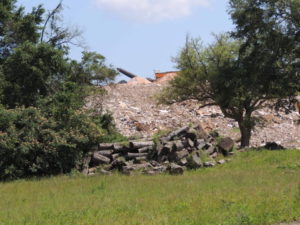
Yesterday the Florida Department of Health, Public Health Toxicology, mailed the community update to about 650 property owners near the Rolling Hills Landfill. This update summarizes the Department’s draft health consultation report, solicits public comment on this report, and announces a March 27 open house public meeting.
The hydrogen sulfide levels in air near the Rolling Hills Landfill between July 21 and December 31, 2014 were a public health hazard. Breathing the highest level of H2S measured (590 ppb) near the landfill for 30 minutes is too high to rule out the possibility of headaches or irritation of the nose or throat.
The March 2015 report concluded
* Nearby residents are concerned about heart problems, kidney problems, and cancer. It is unlikely, however, the highest levels of H2S measured near the landfill caused these health problems.
* It is uncertain if levels of H2S measured in the air near the landfill caused eye irritation and respiratory problems.
* It cannot conclude what the public health threat was before July 2014 as no air monitoring was done before that time. It also cannot determine the health threat from pollutants other than H2S.
* Airborne dust can cause breathing and heart problems in older people, the very young, and people with asthma or heart disease. However, since FDOH has little to no dust testing data, we cannot assess the public health threat due to dust.
FDOH Recommends
Landfill staff should keep the levels of H2S levels below 70 ppb in the nearby Wedgewood community. While the Rolling Hills Landfill remains active, Escambia County should:
* Keep testing the air for H2S around-the-clock in the Wedgewood community.
* Test for airborne dust near the landfill.
Here is the update: Wedgewood community update March 2015